In a highly regulated and competitive financial industry, process mining offers invaluable insights into operations, enabling banks and financial institutions to optimize workflows, ensure compliance, and enhance customer satisfaction. This blog explores how process mining can streamline key financial processes, from customer onboarding to credit card issuance, helping organizations improve efficiency and stay ahead of market demands.
The banking and financial services industry is one of the most regulated and competitive industries, where compliance failures can result in heavy fines, leading to reputational and financial damages. Add to this the growing expectations of customers who want a seamless, personalized, and secure digital experience, and the challenges become even more pronounced.
Due to the nature of the business, which is operations and process-heavy, banks and financial institutions have to deal with high volumes of customer queries, compliance requirements, steep fines, and long processing times.
Additionally, financial institutions need to innovate continuously to keep pace with evolving customer expectations and market shifts.
According to a report titled “The State of Connected Customer,” 84% of customers think that how a company treats them is just as important as what it sells. However, many businesses are unable to meet customer expectations.
This is where process mining helps financial institutions gain process visibility and optimize existing workflows and processes with automation.
What is Process Mining?
Process Mining is a non-intrusive methodology and a data-driven approach where financial institutions analyze the data trails of daily business activities, key workflows, business operations, and systems to create a visual model or a living image of the business processes that the organization runs on.
Process mining works without disrupting current operations, systems, or processes.
Unlike traditional process mapping, which relies on manual observations and documentation, process mining uses real-time data. This becomes particularly important for financial services and operations where accuracy, transparency, and compliance are crucial.
How Does Process Mining Enhance Financial Operations?
The process mining approach includes data collection from financial systems like Enterprise Resource Planning (ERP), Customer Relationship Management (CRM), and other databases, such as transactional data. The data helps reconstruct process flows, identify deviations, and highlight inefficiencies.
The result is a data-driven visualization and visibility of the actual processes. Process mining helps enhance financial operations by:
- Uncovering and removing inefficiencies and costly bottlenecks
- Enabling financial institutions to optimize workflows and processes
- Improving process key performance indicators (KPIs)
- Increasing customer experience and satisfaction
- Discovering automation and standardization opportunities
- Managing the change
- Complying with regulations
- Improving their bottom lines.
Use Cases of Process Mining
Below are some use cases that banks and other financial institutions can follow and use the process mining methodology to enhance their financial operations.
1. Customer Onboarding
Customer onboarding is lengthy and cumbersome, especially when it involves complex financial products and multiple regulatory requirements. This process can take a few days to several weeks, requiring detailed due diligence, risk assessments, and compliance checks.
However, delays may happen in such processes due to incomplete documentation, manual processes involved in the review, back-and-forth communications for clarifications, etc.
Process mining can help banks and financial institutions accelerate the onboarding process:
- It can help identify the stages or processes where document collection and verification delays and optimize the process with automated checks and improving communication channels.
- Ensure completion of all compliance checkpoints within the required timeframe
- Analyze past boarding and tailor the experience to individual clients to save time and improve customer satisfaction.
2. Claims Processing
Claims management is a complex and slow process that involves several steps, such as claim submission, investigation, assessment, negotiation, settlement, and disbursal. Claim processing in the United States can take a few days to several weeks. This depends upon the complexity of the claim and the efficiency of the processes and systems in the financial institution.
Most of the time, delays occur due to incomplete forms, incorrect details, time taken to collect all the required documents, such as police reports, and slow communication between the customer, insurance provider, and other parties, such as the hospital and repair facilities.
Process mining can help:
- Identify the stages taking the longest and why — to allocate required resources wherever necessary.
- Highlight how claims are handled and processed at different branches to standardize processes and reduce processing time discrepancies.
- Ensure claims processing within agreed SLAs and automatically flag cases that are at risk of breaching the SLAs, allowing proactive measures and intervention.
Besides process mining, there are a few other ways to manage insurance claims and reduce costs.
3. Loan Processing
In the United States, customers have to wait for substantial durations before their loan or mortgage applications get processed. In some other countries, this can take even longer — that too when all the documentation is in order.
The delays are often caused by errors in data entry by customers and employees, collection of paper documents for verification, missing documents, and the back-and-forth communications between the front and back offices.
This not only leads to delays but also impacts the customer, who may feel a disconnect and lack of transparency, leading to compliance problems and delayed loan approvals — negatively affecting lenders’ ability to compete in the evolving markets.
Process mining can help by:
- Identifying where delays happened in the process and fixing them with automation or standardization to improve overall processing time
- Finding out variations in process handling and understanding the reasons for deviations
- Enhancing transparency with a clear, data-driven picture of the entire loan process—helps in better decision-making and improving efficiency across all touch points.
4. Credit Card Issuance and Disputes
Issuing a credit card involves multiple steps from verifying the identity to the authenticity of the documents submitted. Similar to loans and mortgages, delays in credit cards can also occur due to inaccurate or missing information or documentation requiring the bank or the concerned financial institution to rework.
These delays and rework cost banks and negatively impact the turnaround time to issue a credit card. Similarly, credit card disputes, especially those involving fraud, can be time-consuming and frustrating for customers and the bank itself. In many regions, this process could take 60 or more days to resolve the dispute fully. These delays are caused by the time taken to collect evidence, an investigation involving transaction verification details, communicate with the merchant, etc.
Process mining can help streamline the credit card issuance and dispute process by:
- Tracking activities that take the most time and finding specific causes of delay
- Finding the best and worst performing branches and implementing best practices across the organization to improve the process.
- Analyzing historical disputes and data points to learn where delays are most likely to occur and why, such as evidence gathering.
- Detecting inefficiencies in the dispute-handling process, such as redundant steps.
- Monitoring mandatory deadlines to resolve disputes.
Conclusion
Process optimization is more important than ever in the competitive financial sector today. Financial organizations leverage process mining as a strong tool to acquire insights into their operations, ensure compliance, reduce expenses, and boost customer satisfaction.
As technology advances, process mining is set to become essential in financial operations, helping to boost efficiency and drive innovation throughout the industry.
For financial institutions looking to stay ahead of the curve, now is the time to explore process mining. Whether you’re looking to optimize existing processes, ensure compliance, or gain a competitive edge, process mining offers the insights needed to transform your operations.
To learn more, reach out to us at info@anaptyss.com.


















